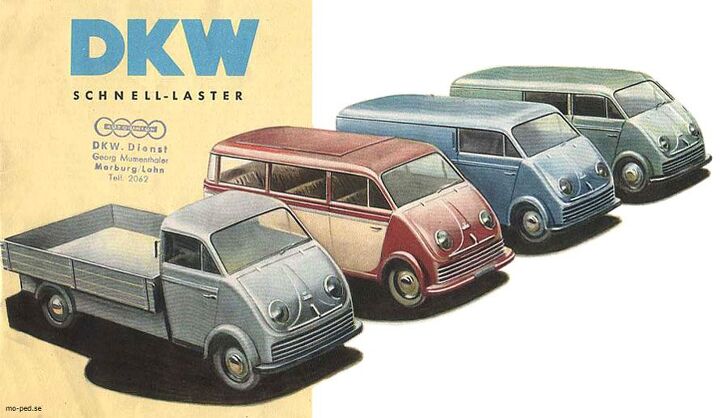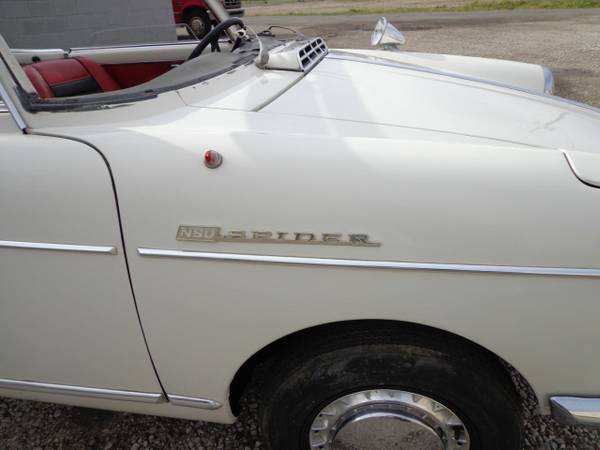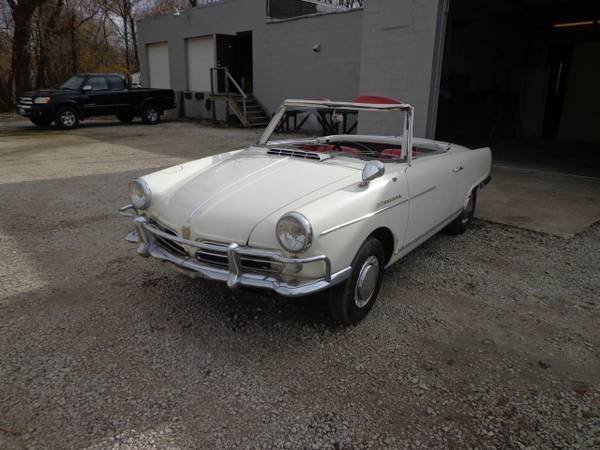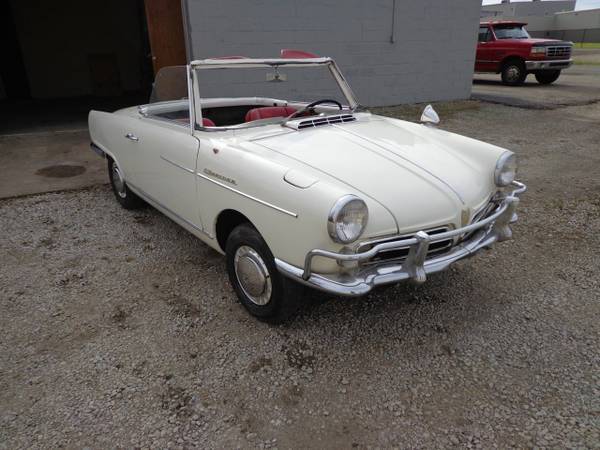#Dkw
Rare Rides: The Very Obscure DKW Schnellaster Elektro-Wagon
Recently Rare Rides featured a very clean example of the DKW Schnellaster van from 1956. The front-drive and transverse-engine layout of the Schnellaster previewed in the Forties the basic format of the family minivan that would arrive over three decades later.
Among the standard Schnellasters produced, there was an even rarer variant: An electric version, as DKW experimented with the possibilities of early EV tech.
Rare Rides: A 1956 DKW Schnellaster, Very Old Van Time
Rare Rides has featured a DKW vehicle only once previously, in a little Brazilian-made version of the mass-market 3=6 wagon. Today’s DKW van also occasionally wore 3=6 badging, but was known as a Schnellaster or F89 L.
Rare Rides: NSU's New Way to Wankel - the Spider From 1965 (Part IV)
Part III of this Rare Rides series explored how NSU readied itself to re-enter the car market and end its longstanding production tie-up with Fiat. Shortly after the painful divorce from the Italians, NSU’s first rotary-powered car was ready.
Rare Rides: NSU's New Way to Wankel - the Spider From 1965 (Part III)
Part II of the NSU story gave some color to the company’s first bout of financial trouble, and how it passed on a Ferdinand Porsche design that would go on to become the Volkswagen Beetle a few years later.
As we left off last time, NSU and Fiat were locked in a longstanding disagreement about who could brand which cars in which way.
Rare Rides: NSU's New Way to Wankel, the Spider From 1965 (Part II)
In Part I of this four-part NSU Rare Rides series, we covered the beginning of the NSU brand and its initial product offerings — which included knitting machines. The company moved into bikes and motorcycles, as well as a three-wheeler considered a midpoint between motorcycle and car.
The engineers were certainly busy, but all was not well over at the bank.
Rare Rides: NSU's New Way to Wankel - the Spider From 1965 (Part I)
Back in the 1960s, a little German car company decided to spend a lot of money to create a new-to-them type of engine. The car company in question was NSU, and the engine that cost them so much money was a Wankel.
In a first-ever for the Rare Rides series, this will be a four-part entry. Come along as we explore the NSU brand and the Spider; a tiny roadster which ended up almost entirely responsible for the demise of its parent company.
Rare Rides: The DKW Wagon From 1962 - Deceptive Geography (Part II)
Last time, in Part I of this DKW wagon’s saga, we covered a condensed history of the Audi marque. From its inception as Horch, through separation, renaming, and merger into the Auto Union fold, Audi wavered along unsteadily. The company even performed a vanishing act between 1940 and 1964.
In the middle of all this history is our Rare Ride, a tidy DKW wagon from 1962. But all is not as it seems.
Rare Rides: The DKW Wagon From 1962 - History Time (Part I)
A little grey wagon popped up on my radar the other day, presenting the perfect opportunity to write about DKW, Audi, and Auto Union for the first time. Those familiar rings on the hood are paired with the DKW shield and an Auto Union badge, but eventually all would separate. A few short years after this wagon was produced, the Audi rings stood alone for the first time in many decades.
This is Part One of a two-part entry into the Auto Union world of DKW and Audi.
An Illustrated History Of Automotive Aerodynamics – In Three Parts
[Note: A significantly expanded and updated version of this article can be found here]
That air presented the greatest obstacle to automotive speed and economy was understood intuitively, if not scientifically since the dawn of the automobile. Putting it into practice was quite another story. Engineers, racers and entrepreneurs were lured by the potential for the profound gains aerodynamics offered. The efforts to do so yielded some of the more remarkable cars ever made, even if they challenged the aesthetic assumptions of their times. We’ve finally arrived at the place where a highly aerodynamic car like the Prius is mainstream. But getting there was not without turbulence.























Recent Comments